I am trying to build an ASP.NET MVC 5 Web Application which has a MyDatabase.mdf file in the App_Data folder. I have SQL Server 2014 Express installed with a LocalDb instance. I can edit the database tables using the Server Explorer, however when I debug the application and go to a page where the database is needed I get the following error.
A network-related or instance-specific error occurred while establishing a connection to SQL Server. The server was not found or was not accessible. Verify that the instance name is correct and that SQL Server is configured to allow remote connections. (provider: SQL Network Interfaces, error: 50 - Local Database Runtime error occurred. Cannot create an automatic instance. See the Windows Application event log for error details.
So I looked in the Event Viewer under Application and only see one Warning over and over again.
The directory specified for caching compressed content C:\Users\User1\AppData\Local\Temp\iisexpress\IIS Temporary Compressed Files\Clr4IntegratedAppPool is invalid. Static compression is being disabled.
So I tried rebooting the server, still no go. Same error 50 as before.
I have created an class under Models where I have a class called Post.
namespace MyApplication.Models
{
public class Post
{
public int Id { get; set; }
public string Title { get; set; }
public string Content { get; set; }
}
public class MyDatabase : DbContext
{
public DbSet<Post> Posts { get; set; }
}
}
I also have a Controller setup to list the posts from MyDatabase.
namespace MyApplication.Controllers
{
public class PostsController : Controller
{
private MyDatabase db = new MyDatabase();
// GET: Posts
public ActionResult Index()
{
return View(db.Posts.ToList());
}
}
In my web.config file the connection string looks like this...
<connectionStrings>
<add name="DefaultConnection"
connectionString="Data Source=(LocalDB)\v12.0;AttachDbFilename=|DataDirectory|\MyDatabase.mdf;Integrated Security=True"
providerName="System.Data.SqlClient" />
</connectionStrings>
I've tried the suggestion posted here but it didn't work. Also tried this.
I also notice that the MyDatabase instance gets disconnected after I start running the application. If I refresh the database using Server Explorer in Visual Studio I can view the tables.
How is it that I can connect to the database and edit it within Visual Studio 2013 but when I debug the application it cannot connect to the database?

